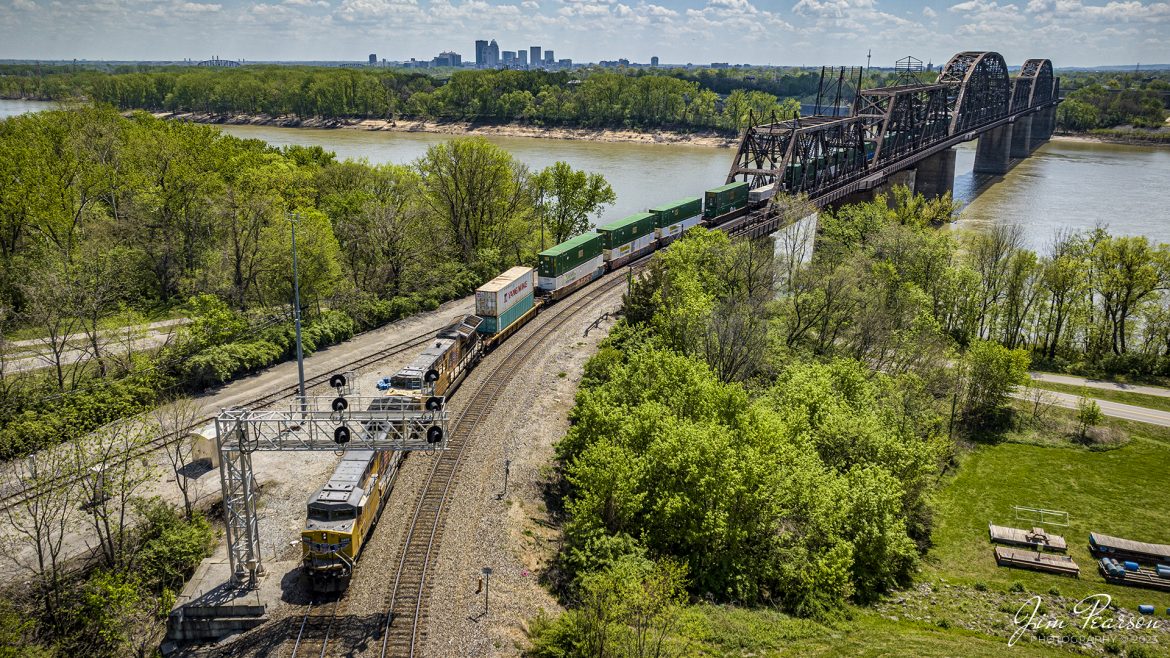Union Pacific 6808 and 2659 lead Norfolk Southern 224 off the K&I bridge out of Louisville, Kentucky as they head west over the Ohio River into New Albany, Indiana on the NS Southern East District on April 15th, 2023.
According to Wikipedia: The Kentucky & Indiana Bridge is one of the first multi modal bridges to cross the Ohio River. It is for both railway and common roadway purposes together. By federal, state, and local law railway and streetcar, wagon-way, and pedestrian modes of travel were intended by the City of New Albany, City of Louisville, State of Kentucky, State of Indiana, the United States Congress, and the bridge owners.
The K & I Bridge connects Louisville, Kentucky to New Albany, Indiana. Constructed from 1881 to 1885 by the Kentucky and Indiana Bridge Company, the original K&I Bridge opened in 1886. It included a single standard gauge track and two wagon ways, allowing wagons and other animal powered vehicles to cross the Ohio River by a method other than ferry for the first time. At the time motorized vehicles were virtually nonexistent.
The K&I Bridge company also owned a ferry boat operation during both the 1st and 2nd bridge; eventually that operation was sold as the bridge’s success largely outmoded boat usage.
In 1910 the bridge company was renamed the Kentucky & Indiana Terminal Railroad Co. From 1910 to 1912, a new, heavier bridge was built on new piers just upstream from the original one, after which the old bridge was demolished. The new bridge was double tracked to handle increasingly heavier train and now automobile traffic, eventually receiving the U.S. 31W designation.
The bridge also featured a rotating swing span opening for the passage of ships in high water. The bridge was only opened four times, twice for testing in 1913 and 1915, then in 1916 for the passage of the steamer “Tarascon” and in 1920 for passage of the Australian convict ship “Success”. In 1948 it refused opening of the span for passage of the steamer “Gordon C. Greene” citing inconvenience and costs of cutting power and communication lines, an action for which K&I and LG&E both paid damages to that ship’s company. In 1955 the K&I sought and received permission to permanently tie down the swing span from the Corps of Engineers. In 1952, the creosoted wood block roadways of the second bridge were eliminated and replaced by a steel gridwork roadway.
On February 1, 1979, an overweight dump truck caused a small segment of the steel grate roadway on the bridge to sag about 1 foot (0.30 m). A quick survey promised to reopen the roadway, but automotive traffic was banned thereafter by the railroad.
Tech Info: DJI Mavic 3 Classic Drone, RAW, 24mm, f/2.8, 1/2500 sec, ISO 140.

